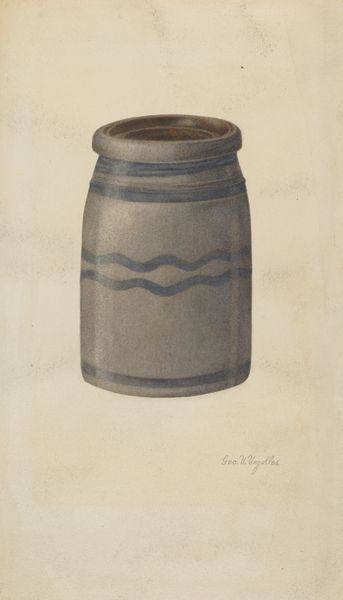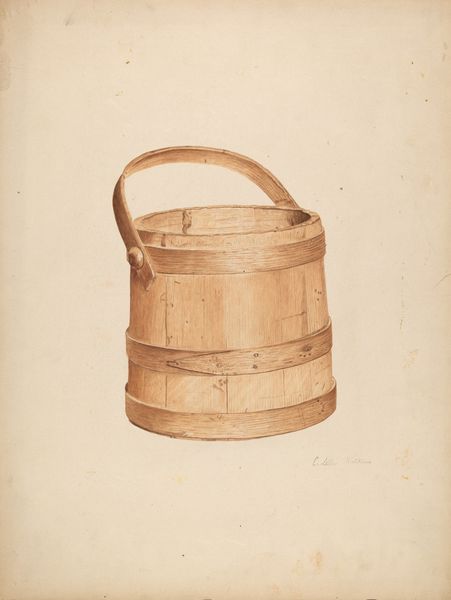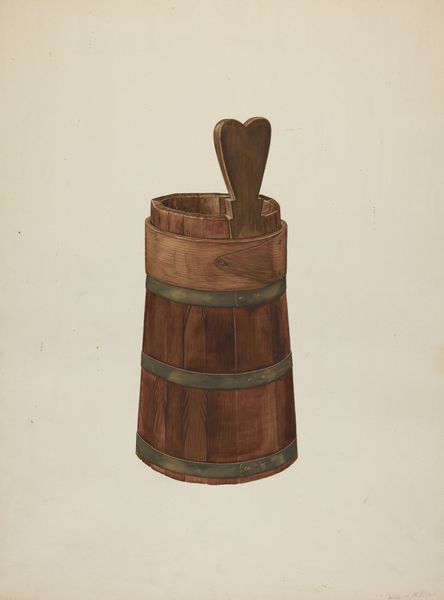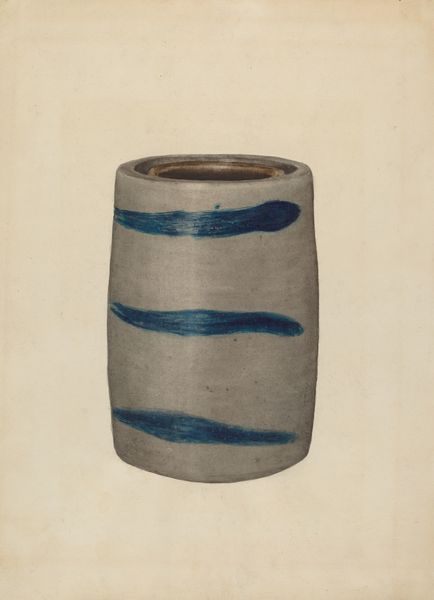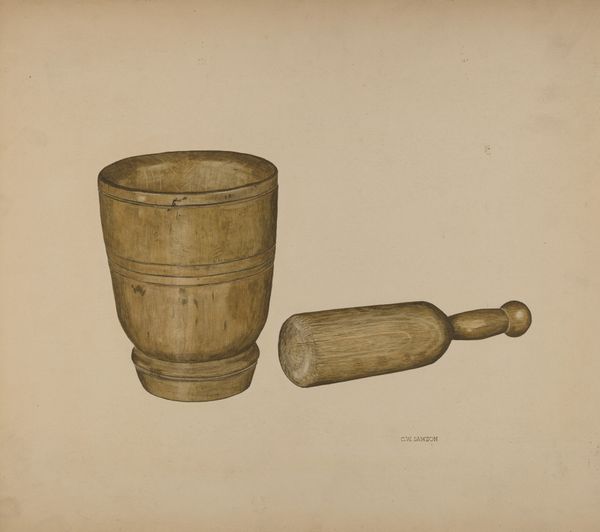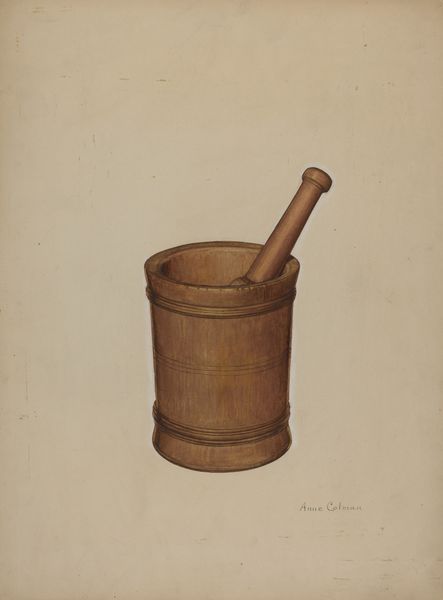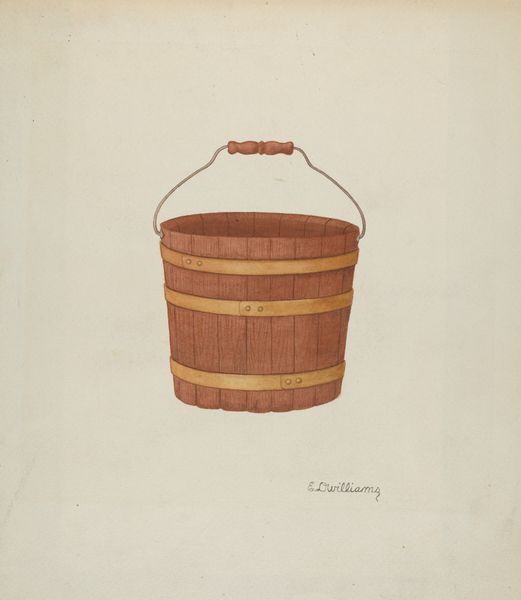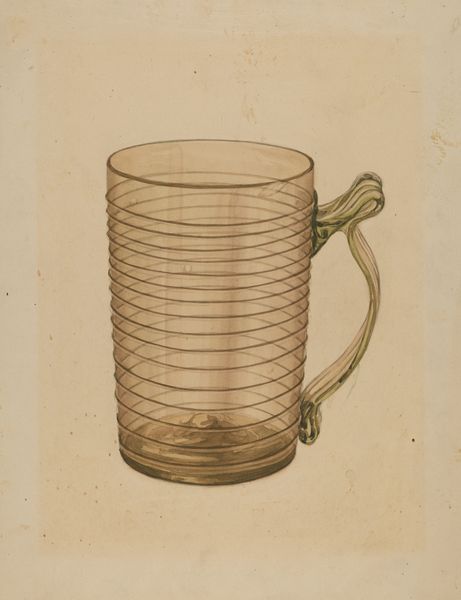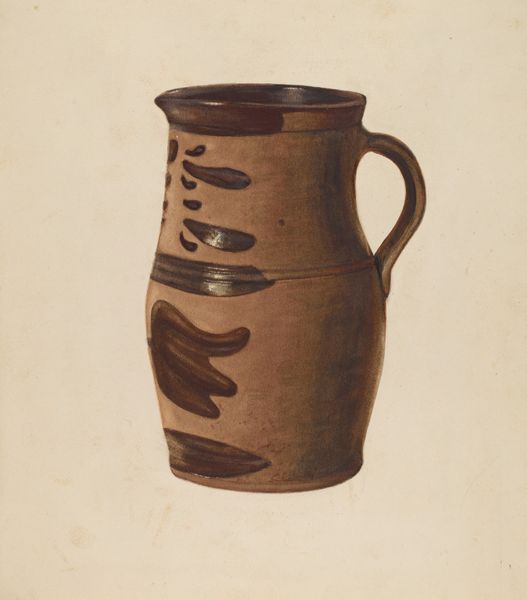
drawing, watercolor
#
drawing
#
water colours
#
charcoal drawing
#
oil painting
#
watercolor
#
watercolour illustration
#
watercolor
#
realism
Dimensions: overall: 26.9 x 24.1 cm (10 9/16 x 9 1/2 in.)
Copyright: National Gallery of Art: CC0 1.0
Curator: Francis Bruner created this watercolor, aptly titled "Jar," sometime between 1935 and 1942. What are your first impressions? Editor: Well, there's a simple elegance to it. The muted grays and blues give it a feeling of quiet functionality. It really puts the handmade quality of this humble object in the spotlight. Curator: I see it similarly. The jar, despite its ordinariness, carries a resonance, doesn't it? The circular form, repeated in the waves, it hints at the cycles of life and domestic rhythm. Editor: Absolutely, and focusing on it materially, that stoneware jar speaks to specific labor practices. The turning of the clay on the wheel, the firing in the kiln – the skill that shaped this object reflects its history of use. Consider that such stoneware, often made with local clay deposits, played an important part in home food preservation before widespread refrigeration, helping people sustain themselves from their local environments. Curator: True, it's a tangible connection to the past. The waves are almost an invocation of water itself, the lifeblood this container might hold. And thinking about that history— it could've held water, milk, preserves… Editor: Yes! And the design – those carefully applied blue stripes and the wavy lines – speak to a particular aesthetic, a blend of utility and decoration. Were those bands cobalt oxide in the glaze? The materials themselves link the object to a certain place and time. It invites consideration of what survives and what doesn't in these contexts. Curator: The symbol is so embedded within everyday life, its deeper meaning easily overlooked. A container – holding and preserving. That idea is powerful, hinting at both survival and heritage. Editor: And there’s an interesting tension between this domestic, handmade object rendered through a “high art” medium. Does focusing on these objects elevate their value? What is the role of artistic representation in this material narrative? Curator: Good questions. Perhaps it's about seeing the artistry inherent in even the most functional forms. Editor: It really urges us to appreciate not just the final artwork, but the story it tells about its origin. Curator: Precisely, this jar serves as a quiet emblem, connecting the domestic sphere with universal, timeless ideas of sustenance and memory. Editor: It is so easily taken for granted. Bruner urges us to focus more clearly on it.
Comments
No comments
Be the first to comment and join the conversation on the ultimate creative platform.
